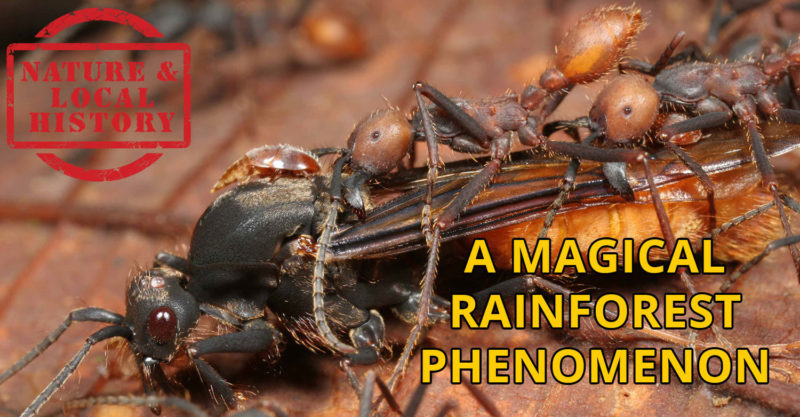The Mixed Feeding Flock
By Jack Ewing
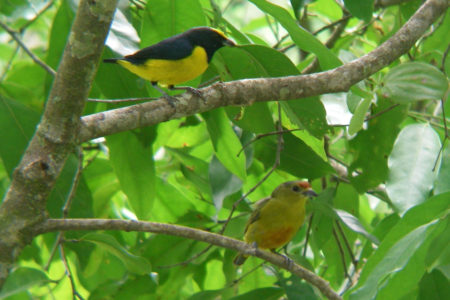
My obsession with tropical nature began with my first monkey sighting. I had seen them in the zoo, but there is no comparison between zoo monkeys and wild ones. My first toucan was another special moment. “How can it even fly with that huge beak?” My first sloth, boa constrictor, kinkajou, king vulture, and terciopelo viper were others. But it wasn’t until more than 15 years later that I was to witness one of the most complex and intriguing phenomenon the rainforest has to offer, the mixed feeding flock, a congregation of many different species of birds in a small area each busy consuming its own special food in its own special way at its own level of the forest.
Though the rainforest as a whole had already captivated my soul a number of years earlier, and I lived in a bird watcher’s paradise, it wasn’t until 1987 that I got interested enough in our feathered friends to start actively looking for them, identifying them, and making a list. In those days there were no field guides to the birds of Costa Rica. Birds of Mexico and Birds of Panama were as close as we could get. My bird list grew rapidly at first and then gradually slowed. Then on one special day I added 11 new species in less than an hour. It was about six months into my birding career when I was to wander into a bird watcher’s dream, a mixed feeding flock. It is a phenomenon that every birder and every bird watching guide prays for. For the aficionado it will assure new species for the list, and for the guide it is sure to result in a group of very happy visitors.
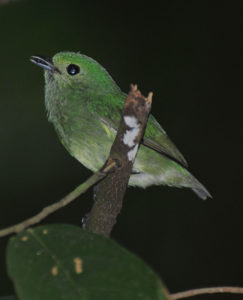
It goes something like this:
From its perch in the top a rainforest tree the toucan grabs a small yellow fruit in its beak, tosses it in the air, and catches it in its open mouth. At that moment a katydid hops by and the toucan grabs and eats it as well. The rainforest is alive with small life forms running in every direction, trying to escape the thousands of voracious, foraging army of ants fanned out across the forest floor, stinging, killing, and eating every small insect, reptile, or amphibian in its path. Some of the ants are climbing the trees, and the toucan will soon have to move to avoid the painful stings, but for now it is feasting on every panicked creature that scurries past. A multitude of other birds are also taking advantage of the chaotic scattering of life, hawks, ant shrikes, flycatchers, leaf tossers, foliage gleaners, trogons, wood creepers, and more, each catching and eating every living thing it finds.
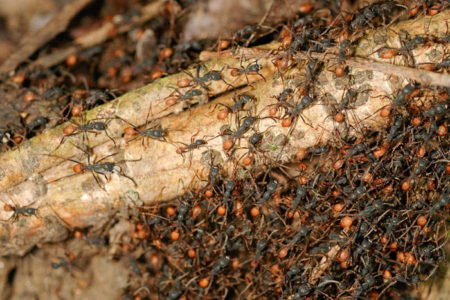
Nothing causes more havoc in the rainforest than an enormous hoard of foraging army ants (Eciton burchelli) sometimes containing over 100,000 ants. The presence of the raiding ants strikes panic into all types of small animal life, and the birds take advantage of this. Almost never do they eat the ants that create the windfall of food. As already mentioned the flock contains many different species, each with its own specialty. Any individual or pair of birds from a new species is welcome to join the feast. The newcomers have their own specialty and create no competition for others in the flock. But if another individual or pair of the same kind as one already present tries to join, they will find themselves unwelcome and repelled by their own kin. This may seem strange to us, but not to the birds. Members of their own species are competitors, but members of other species feed in a different manner or at a different level of the rainforest, and there is little or no competition among them. For example a woodcreeper that climbs up tree trunks, poking its beak in every little nook and cranie, under every piece of loose bark in search of insects, doesn’t compete with the leaf tossers that pick up leaves on the ground, throw them into the air, and grab whatever moves underneath.

A troop of foraging white-fronted capuchin monkeys, which like the army ants, will cause panic among smaller denizens of the rainforest, will also attract a variety of bird species. As the level of pandemonium is somewhat less than with the ants, the monkey-provoked mixed feeding flock usually consists of fewer birds. The key word is “foraging”. Resting, playing, or traveling monkeys don’t attract birds. Likewise, traveling army ants don’t attract them either. Only groups of raiding predators that are actively searching for food and creating havoc among the thousands of tiny creatures that make their homes in the multitude of hiding places to be found in the rainforest will attract the birds.
I know of no way you can actively look for a mixed feeding flock. They appear where you find them and never cease to fascinate any human observers who happen to be lucky enough to be in the right place at the right time. I wish you good luck, and sincerely hope you have the opportunity to experience this magical rainforest phenomenon.
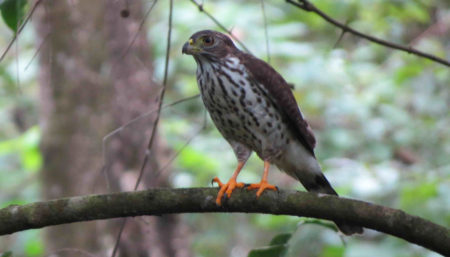
Jack Ewing was born and educated in Colorado. In 1970 he and his wife Diane moved to the jungles of Costa Rica where they raised two children, Natalie and Chris. A newfound fascination with the rainforest was responsible for his transformation from cattle rancher into environmentalist and naturalist. His many years of living in the rainforest have rendered a multitude of personal experiences, many of which are recounted in his published collection of essays, Monkeys are Made of Chocolate. His latest book is, Where Jaguars & Tapirs Once Roamed: Ever-evolving Costa Rica. Jack and Diane live on and manage the Hacienda Barú National Wildlife Refuge, a well-known ecotourism destination on the southwest coast of Costa Rica.

